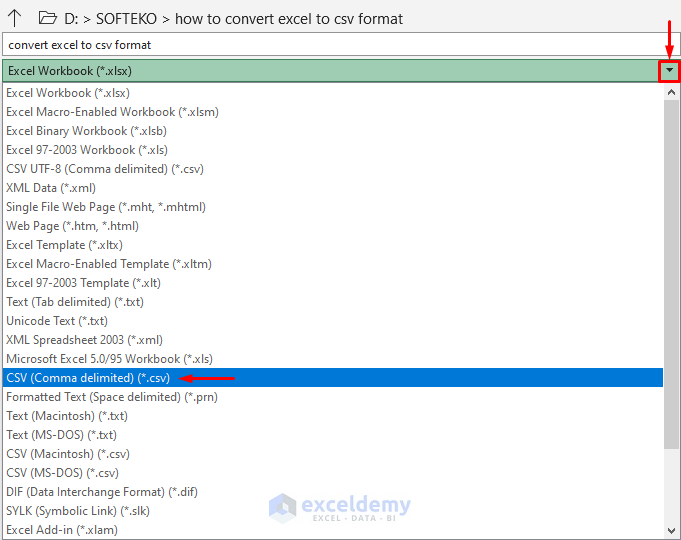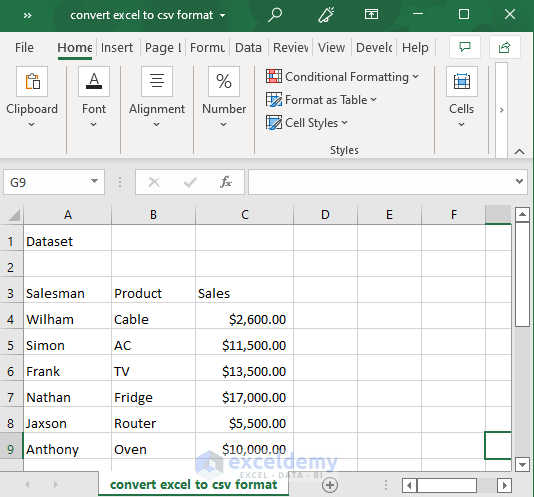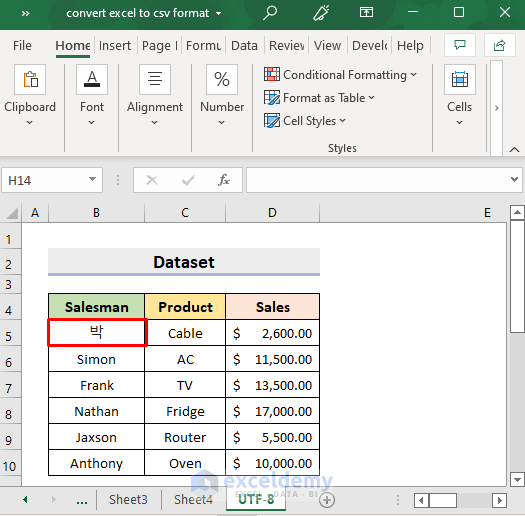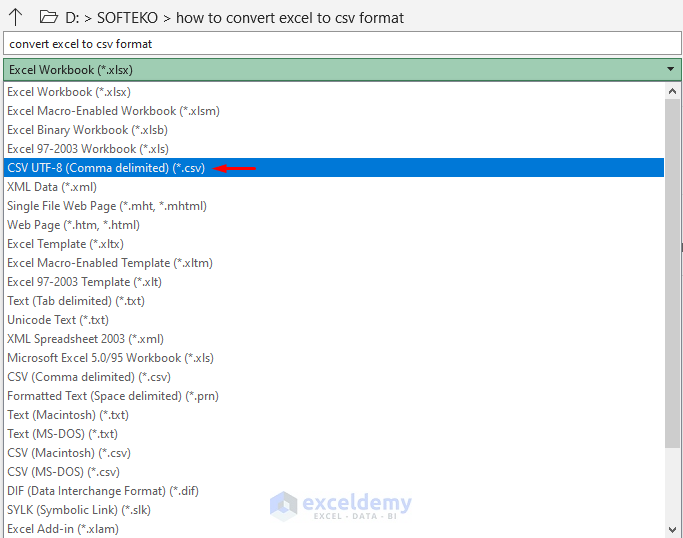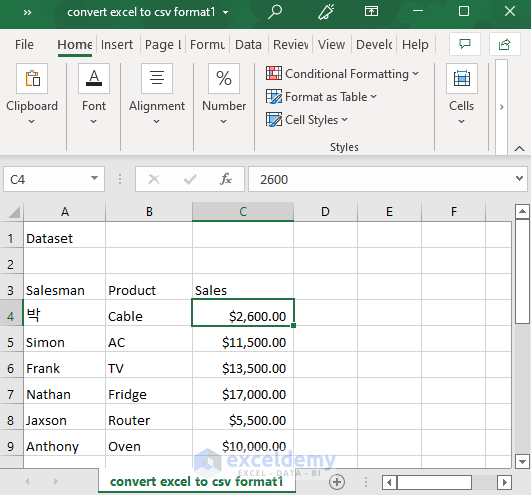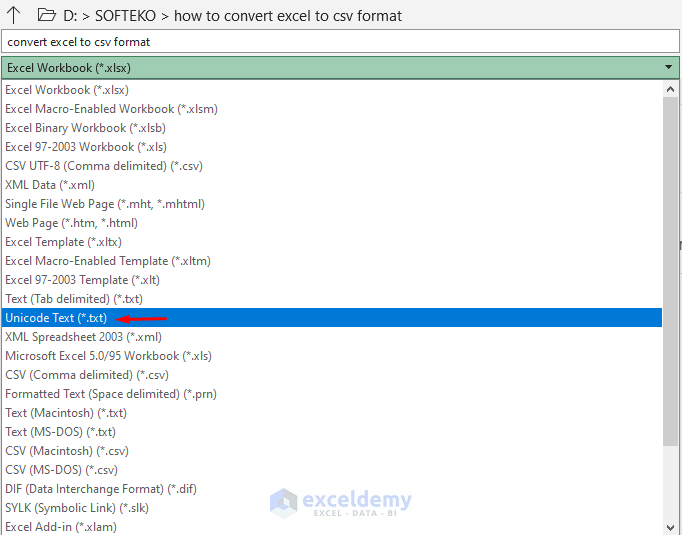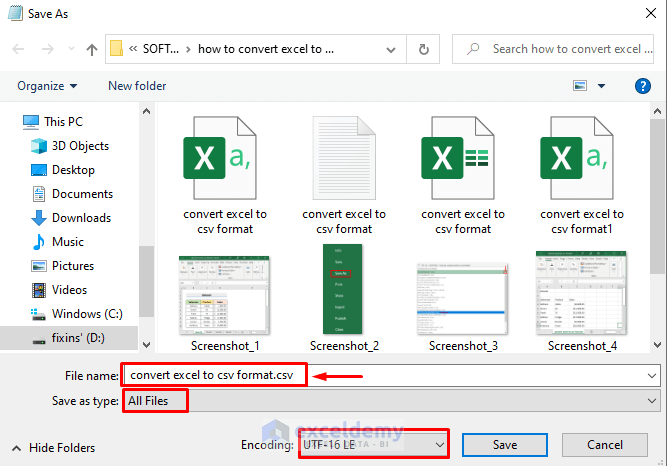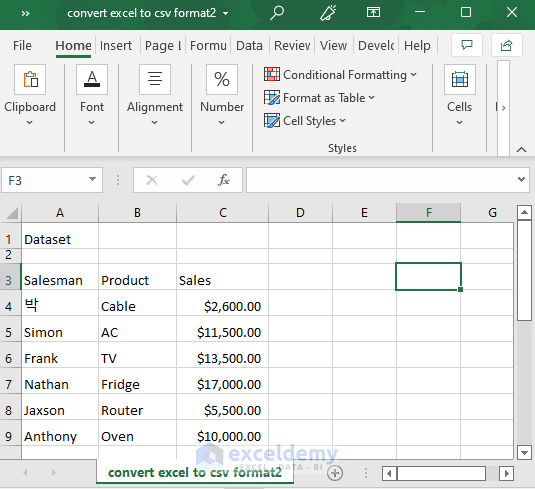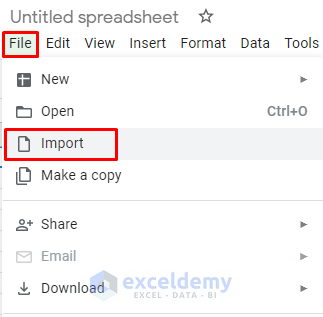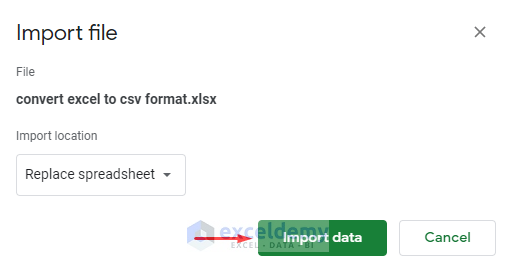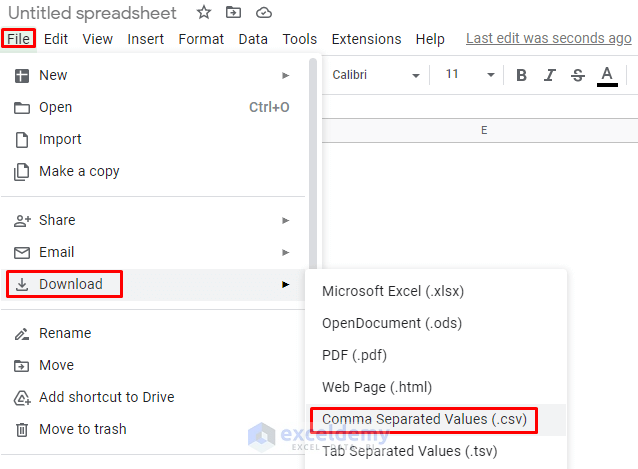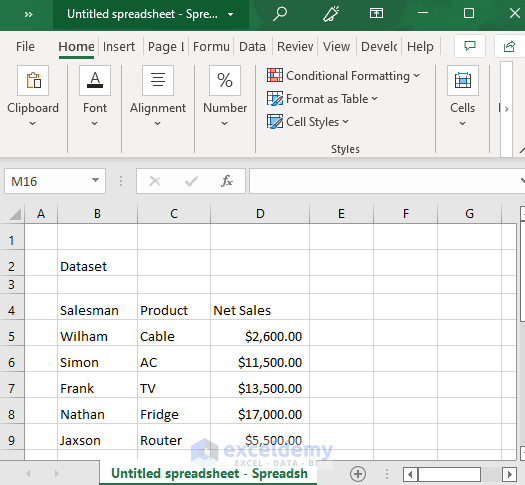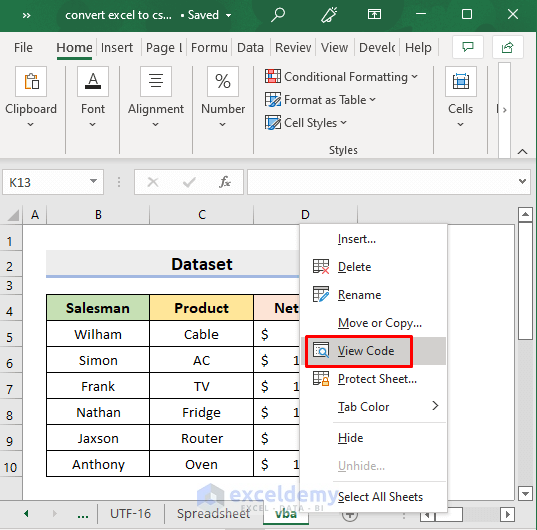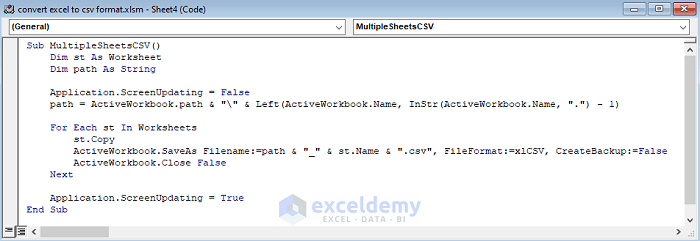We’ll use the following Excel file as our source, which contains a sales report of a company. We’ll transform Excel worksheets into separate CSV files.
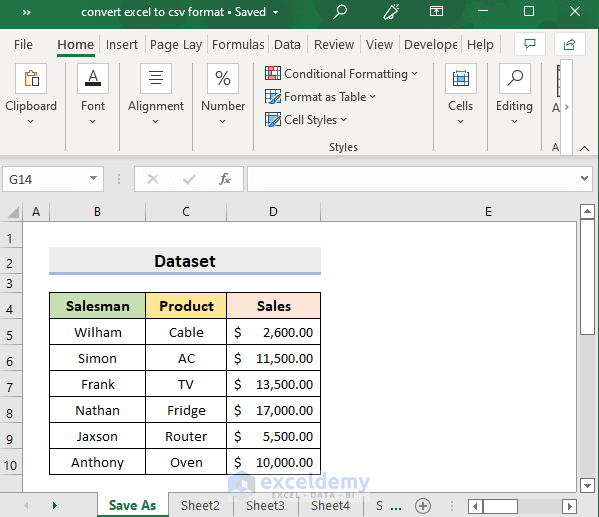
Method 1 – Convert Excel to CSV Format Through Save As
Steps:
- Open the Excel workbook and the desired sheet.
- Click on File.
- Select Save As.
- In the Save As window, click the drop-down icon as shown below and choose the CSV (Comma delimited) option.
- Press Save.
- This will create a CSV file, which is shown in the following picture.
- To get all the sheets in the CSV format, repeat the process for each worksheet.
NOTE: After pressing Save, you’ll get a warning dialog box. It reminds you that only the active worksheet will get converted to a CSV file.
Method 2 – Transform Excel to CSV UTF-8 without Destroying Special Characters
Steps:
- We have a Salesman’s name in Korean. This won’t be saved in the CSV file.
- Go to File.
- Select Save As.
- In the Save As window, select CSV UTF-8 from the drop-down options.
- Press Save.
- Excel will create a new CSV file for the desired sheet, and you’ll see the special character in that CSV file.
Method 3 – Excel File to CSV UTF-16 Conversion
Steps:
- Open the Excel worksheet.
- Press Save As in the File window.
- Select Unicode Text from the drop-down list.
- Press Save. You’ll get a .txt file.
- Open the text file and click Save As.
- A dialog box will pop out.
- Type .csv at the end of the file name and choose All Files in the Save as type.
- Select UTF-16 LE in the Encoding field and press Save.
- You’ll get a CSV file that contains the special characters correctly.
Method 4 – Use Google Spreadsheets for Turning Excel Files into CSV
STEPS:
- Open a blank Google Spreadsheet.
- Select Import from the File option.
- Select the Excel workbook and press Import data.
- You’ll get the file in the spreadsheet.
- Select File, then choose Download and pick Comma Separated Values (.csv).
- Open the downloaded file.
- You’ll get a new CSV file.
Method 5 – Apply VBA to Change Multiple Excel Sheets to the CSV Format
Steps:
- Select any sheet and right-click on the sheet name at the bottom.
- Select View Code.
- The VBA window will emerge and a code box will appear.
- Copy the below code and paste it into the code box.
Sub MultipleSheetsCSV()
Dim st As Worksheet
Dim path As String
Application.ScreenUpdating = False
path = ActiveWorkbook.path & "\" & Left(ActiveWorkbook.Name, InStr(ActiveWorkbook.Name, ".") - 1)
For Each st In Worksheets
st.Copy
ActiveWorkbook.SaveAs Filename:=path & "_" & st.Name & ".csv", FileFormat:=xlCSV, CreateBackup:=False
ActiveWorkbook.Close False
Next
Application.ScreenUpdating = True
End Sub- Save the file.
- Press F5.
- The code will create separate CSV files for each worksheet in that workbook.
Download the Practice Workbook
<< Go Back to Export Excel to CSV | Export Data from Excel | Learn Excel
Get FREE Advanced Excel Exercises with Solutions!
